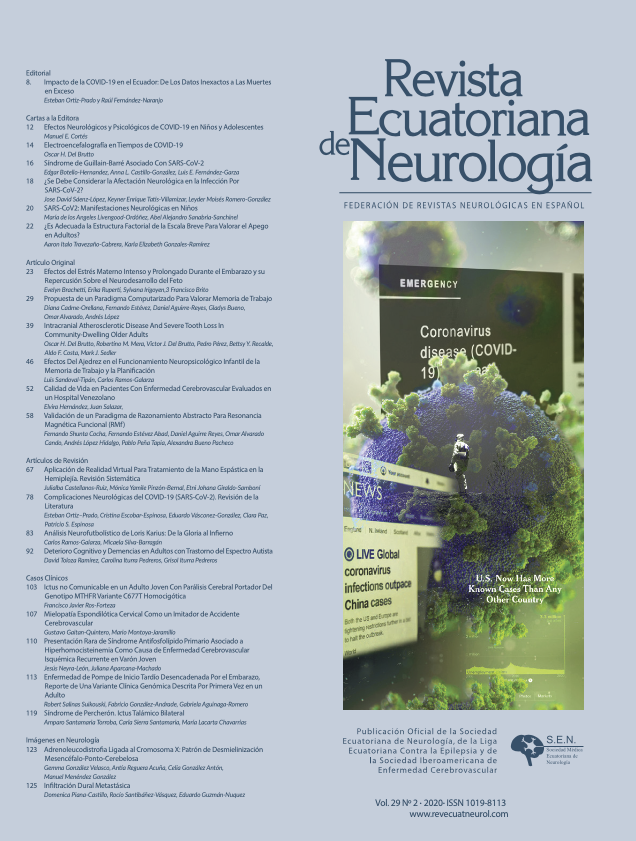Abstract
Background: Information on the association between tooth loss and intracranial atherosclerotic disease (ICAD) is limited. Here, we aimed to assess whether non-traumatic severe tooth loss – as a surrogate for chronic inflammatory periodontal disease – is associated with ICAD in a cohort of older adults (aged ≥60 years) living in rural Ecuador.
Methods: ICAD was identified by CT determinations of high calcium content in the carotid siphons or MRA findings of significant stenosis of intracranial arteries. An oral exam assessed the level of non-traumatic severe tooth loss (<10 remaining teeth). Logistic regression models were fitted to assess the independent association between severe tooth loss and ICAD, after adjusting for demographics, cardiovascular risk factors and MRI evidence of cerebrovascular damage.
Results: Of 581 individuals, 269 (46%) had severe tooth loss and 205 (35%) had ICAD. Univariate analysis found a significant association between the two variables (p=0.002). Significance persisted when age and sex were added to the model (p=0.047), although it became non-significant in a logistic regression model including all confounders. Covariates with a significance p<0.1 included age, poor body mass index, high fasting glucose, the presence of >10 enlarged basal ganglia perivascular spaces, and both lacunar and non-lacunar strokes. After factoring in age partitioned by the median and other significant covariates, severe tooth loss remained significantly associated with ICAD.
Conclusions: Severe tooth loss and age are both associated with ICAD in the study population. Some of the effect of severe tooth loss on ICAD is captured by age.

